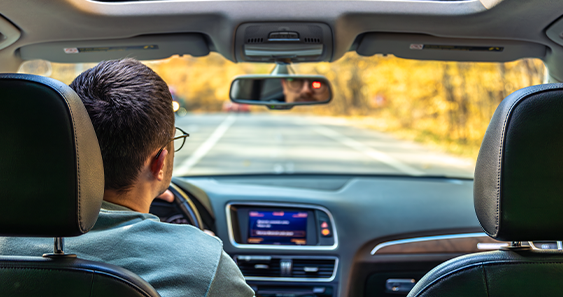ADAS (advanced driver assistance systems) cameras work alongside sensors and radar to provide information to the systems themselves. They are designed to aid ADAS in providing convenience and safety to your vehicle.
Without effective ADAS cameras, you may be driving in unsafe conditions, so it is important that you have them recalibrated regularly.
How do ADAS cameras work?
ADAS cameras work with sensors in a number of ways to provide instant feedback and amendments to a driver:
- Capturing images – Mounted cameras on the front windscreen, the rear of the vehicle, and next to the mirrors on either side of the car, ADAS cameras capture constant images of pedestrians, vehicles, and any other obstacles.
- Processing images – ADAS also consists of smart computer systems, which will analyse the captured images and use this to send information to the driver and to other ADAS features which may intervene automatically.
- Distance calculation – Using algorithms and smart technology, ADAS cameras play a part in calculating the distance between a vehicle and a potential hazard. This provides vital information ahead of time, which could be the difference in avoiding an accident.
- Decision making – ADAS cameras and features are designed to make split second decisions, with safety at the forefront. They also provide information to drivers which allows for easier and more educated decision making.
People often refer to ADAS cameras, when they actually mean the systems as a whole. Cameras are merely a component of ADAS, as opposed to being the system themselves. This doesn’t take away from their importance though, most ADAS features wouldn’t be able to work without well-aligned cameras.
Why are ADAS cameras important?

ADAS cameras are important because they provide a vital safety and convenience feature to most modern vehicles. They are a key component to advanced driver assistance systems as a whole, and our roads would not be as safe without them.
Most modern vehicles include at least one ADAS feature, and the number of vehicles without any systems is constantly decreasing. The increase in road and vehicle automation is widely debated; many ask the question: do we really want to put our lives in the hands of computers and technology (more advanced ADAS can make potentially life-saving interventions)?
But the rate of ADAS error is actually very low, road safety reports have suggested that a full deployment of the most common ADAS features would reduce UK road accident frequency by 23.8%. This highlights the usefulness of ADAS, and provides evidence to suggest that ADAS is much more likely to save lives than to make a fatal error.
Do ADAS cameras need maintenance?
ADAS cameras do need semi-regular maintenance to remain safe and useful. The job of these systems in general is to increase safety and to streamline the driving process, but they can’t do this effectively if they aren’t set up properly to work in unison with each other.
ADAS calibration is the process of finely adjusting ADAS sensors and cameras to ensure that they work correctly. There are two types of calibration, known as static and dynamic calibration:
Static calibration is performed in a specialised workshop, a controlled environment, whilst the vehicle is not in motion. It requires the use of specialist equipment, and is usually an effective and reliable method for ADAS calibration.
Static calibration is generally a cheaper option, and usually takes 1-2 hours. However, static calibration often garners slightly less accurate, and therefore effective, results than dynamic calibration.
Dynamic calibration, often referred to as ‘mobile calibration,’ takes place whilst the vehicle is moving. A qualified technician will plug a handheld device into the vehicle and drive at a constant speed through a controlled environment.
Safety features of ADAS cameras
ADAS cameras are a vital component in many safety systems, helping to track obstacles and provide information to calculate distances:
- Parking assist – Cameras provide information, shown on a visual display, to make parking easier.
- Lane departure warning – ADAS cameras detect lane markings so they can alert drivers if they are drifting out of the desired lane.
- Blind spot alerts – Alongside sensors, cameras can be used to provide information about obstacles in blind spots, often alerting the driver using buzzes or beeps.
- Traffic sign recognition – Cameras can detect and read traffic signs, and alert the driver to potential hazards and upcoming road conditions.
- Automatic emergency braking – Also known as AEB, automatic emergency braking uses cameras to detect potential danger then, if necessary, automatically intervene.
ADAS cameras provide crucial information to your vehicle, enhancing safety and making your life easier. ADAS calibration is the main way in which you can ensure that your systems are working properly.

